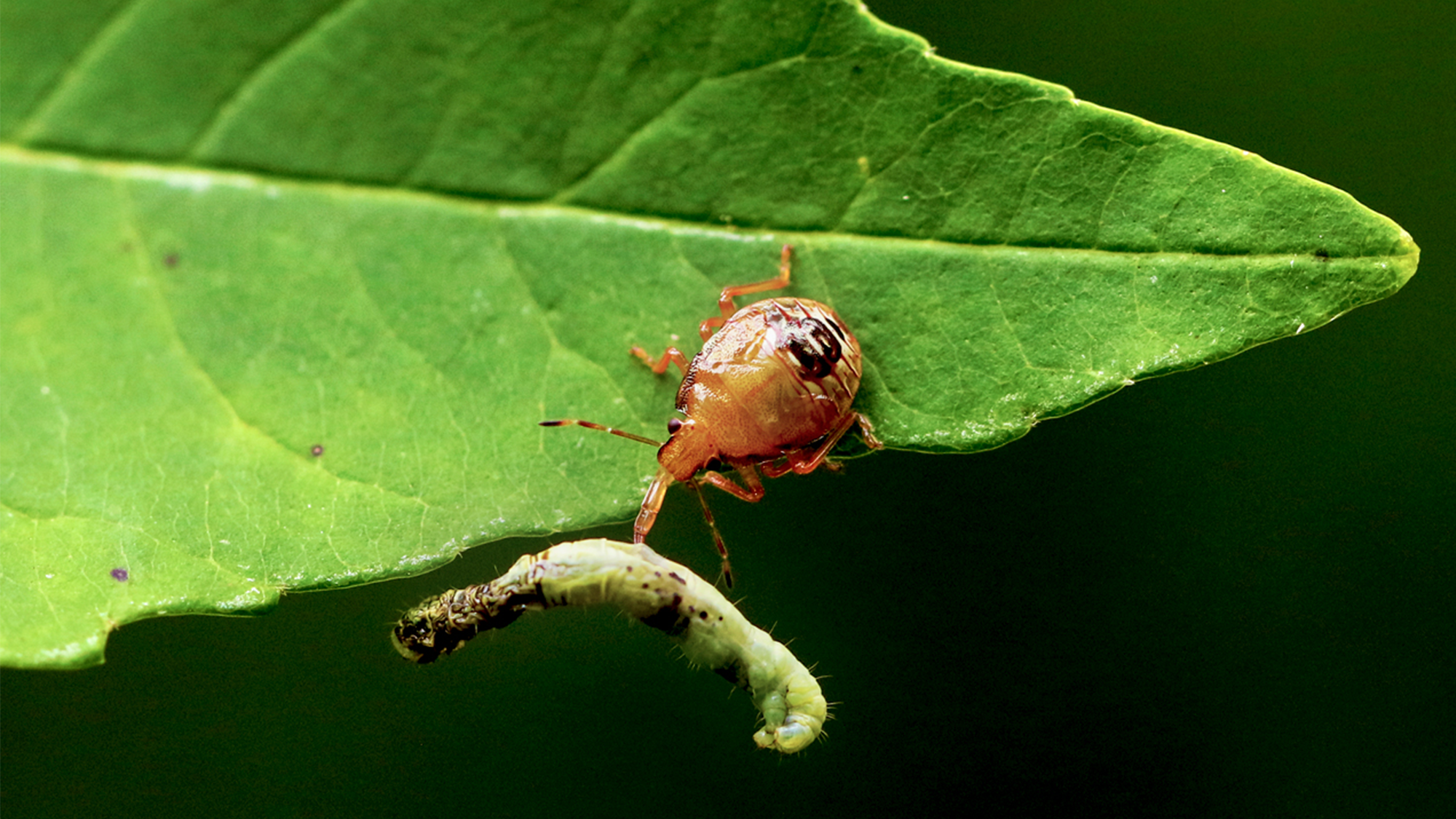

Artificial light at night can wreak havoc on a number of animals, from confusing moonlight-following sea turtle hatchlings to disrupting the sleep patterns of free-living animals like birds, to even stressing out caterpillars and making them age quicker.
Scientists are continuing to look more at the effects of artificial night light on insect larvae–like caterpillars. A study published this month in the journal Proceedings of the Royal Society B: Biological Sciences found that even moderate levels of artificial light attract more caterpillar predators and reduce the chance that their larvae grow up into moths. Moths are part of the order lepidoptera that also contains butterflies and skippers ,and their larvae can serve as food for larger prey like birds, wasps, and some small amphibians.
[Related: The switch to LEDs in Europe is visible from space.]
To test this light theory, scientists from Cornell University placed 552 lifelike caterpillar replicas made of soft clay in a forest in New Hampshire, gluing them to leaves to look as real as possible. They were made from a green clay that mimics the color and size of two moth caterpillars: Noctuidae (owlet moths) and Notodontidae (prominent moths). The marks of predators like birds, other insects, and arthropods can be left in the soft clay if they tried to take a bite of the fake caterpillars.
Some of the models were placed on experimental lots that had 10 to 15 lux LED lighting, or roughly the brightness of a streetlight. The lights stayed on at night for about seven weeks in June and July 2021.
Of the 552 caterpillars deployed, 521 models were recovered. Almost half (249 fake caterpillars) showed predatory marks from arthropods, during the summer-long nighttime study. Additionally, they found that the rate of caterpillar predation was 27 percent higher on the experimental plots compared with the control areas that didn’t have the LED lighting.

Since the night sky is getting increasingly more polluted with artificial light, this poses another ecological problem for lepidopterans. These creatures already suffer from threats like habitat loss, chemical pollutants used in farming, climate change, and increasingly prevalent invasive species, according to the team.
[Related: ‘Skyglow’ is rapidly diminishing our nightly views of the stars.]
These findings are particularly worrisome for caterpillars at a larval stage when they are eating leaves to ensure that they grow into their next stage of development. Study co-author and research ecologist Sara Kaiser told the Cornell Chronicle, “When you turn on a porch light, you suddenly see a bunch of insects outside the door. But when you draw in those arthropod predators by adding light, then what is the impact on developing larvae? Top-down pressure – the possibility of being eaten by something.”
Some simple ways to reduce artificial light are by using smart lighting control to remotely manage any outside lighting, making sure that lights are close to the ground and shielded, and using the lowest intensity lighting possible.
